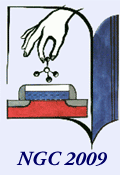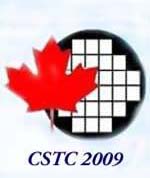
|
Nano and Giga Challenges in Electronics, Photonics and Renewable Energy | 14th Canadian Semiconductor Technology Conference |

 |
|
 |
|
|
Commentary
Invention of OLEDs in early 1980s by Kodak scientists Ching Tang and Steven VanSlyke paved a road to developing a truly unique technology, which, from an academic perspective, blends together photophysics, organic chemistry, and solid state physics on a molecular scale. An archetypal OLED device contains special organic materials that emit light when stimulated by passing electric current. At least one dimension of such a device is of nanoscale, with thicknesses of light-emitting regions on the order of several molecules. Despite some superficial resemblance with inorganic LEDs, the OLEDs rely upon very distinct and mostly unexplored operating principles and materials. Kodak is enabling the OLED technology in many ways, from pioneering studies of device physics and chemical mechanisms to development of improved materials, device architectures and innovative manufacturing processes. We think the possibilities opened by OLED technology are very exciting. In a short term, OLED will become more and more common as separate display devices and luminaires. In a longer term, we expect that unique properties of OLEDs will enable completely new applications. For example, windows that change to displays have already been shown at trade shows. The unquestionable potential of OLED technology for inexpensive manufacturing of curved, transparent, and flexible devices will enable designers to create unconventional lighting and decorative products. The OLEDs may well become abundant (in terms of square footage, even) in future homes and offices, combining functions of information displays (TVs, computer monitors, digital picture frames), decorations (wallpaper, ceiling tiles), and lighting fixtures. Just as the invention of OLEDs was driven by fundamental research, the further development of this technology also strongly depends on it. NGC2009 conference provides everyone with an excellent opportunity to have fruitful discussions and exchange ideas in the many research fields, including OLED-related ones. |